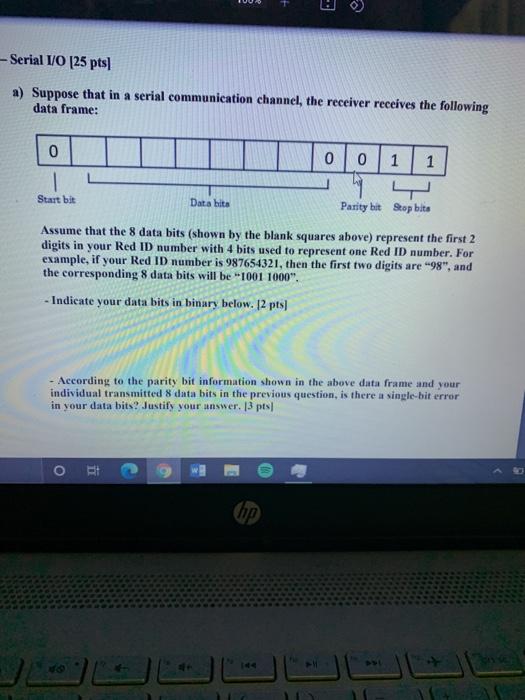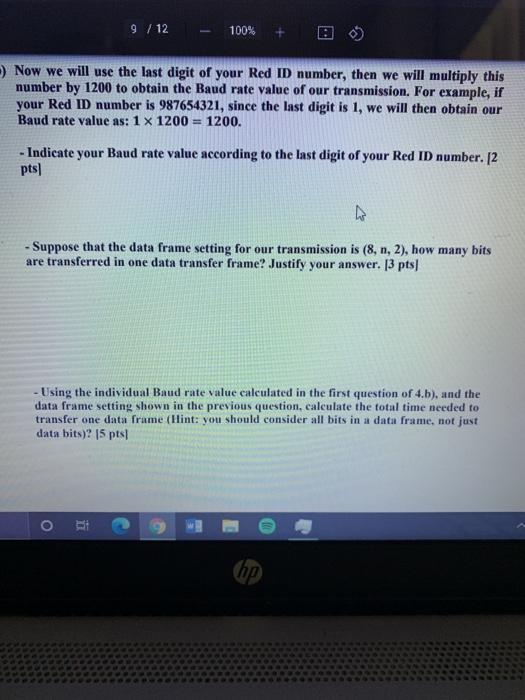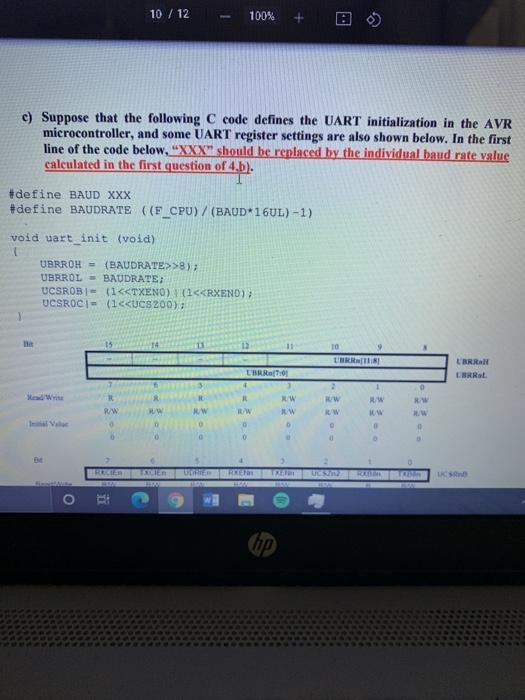- Serial I/O (25 pts] a) Suppose that in a serial communication channel, the receiver receives the following data frame: 0 0 0 1 1 1 Start bit Data bita Parity bit Stop bite Assume that the 8 data bits (shown by the blank squares above) represent the first 2 digits in your Red ID number with 4 bits used to represent one Red ID number. For example, if your Red ID number is 987654321, then the first two digits are "98", and the corresponding 8 data bits will be "1001 1000". - Indicate your data bits in binary below. 12 pts] According to the parity bit information shown in the above data frame and your individual transmitted data bits in the previous question, is there a single bit error in your data bits? Justify your answer. 13 pts/ o ti hp M 9 / 12 100% + - Now we will use the last digit of your Red ID number, then we will multiply this number by 1200 to obtain the Baud rate value of our transmission. For example, if your Red ID number is 987654321, since the last digit is 1, we will then obtain our Baud rate value as: 1 x 1200 = 1200. - Indicate your Baud rate value according to the last digit of your Red ID number. 12 pts) - Suppose that the data frame setting for our transmission is (8, n, 2), how many bits are transferred in one data transfer frame? Justify your answer. 13 pts] - Using the individual Baud rate value calculated in the first question of 4.b), and the data frame setting shown in the previous question, calculate the total time needed to transfer one data frame (Hint: you should consider all bits in a data frame, not just data bits)? 15 pts! hp 10 / 12 1 100% e) Suppose that the following C code defines the UART initialization in the AVR microcontroller, and some UART register settings are also shown below. In the first line of the code below, "XXX" should be replaced by the individual baud rate value calculated in the first question of 4.b). #define BAUD XXX #define BAUDRATE ((F_CPU)/(BAUD*160L)-1) void uart_init (void) UBRROH = (BAUDRATE>>) UBRROL = BAUDRATE UCSROBI (1>) UBRROL = BAUDRATE UCSROBI (1









